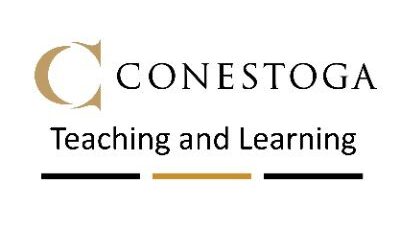
Our Observers Share Teaching Advice
Teaching & Learning offers observations of online synchronous classes, an initiative that began Fall 2020 and will continue in Winter 2021. Over 300 observations were conducted in 2020!
After a one-hour virtual visit to a synchronous class, observers (and full-time consultants, in the case of full-time faculty) provide a one-on-one coaching session to discuss areas of enhancement.
In a survey distributed November 2020, faculty reported having an observation and coaching session an effective exercise, one that helped them to reflect on their teaching practices while they learned to support students learning online synchronously. They valued the advice and conversation shared in the coaching session.
Our observers took the time to share their advice for online synchronous teaching. We hope you will find some new ideas as you prepare and deliver your online classes.
Joel Beaupré’s Suggestions:
- Continue exploring tools and strategies – Features such as polling, annotating, and reactions are examples of ways to engage students directly within Zoom (and some options will maintain student anonymity).
- Actively manage the Zoom environment – Muting students or asking them to mute themselves when appropriate.
- Use synchronous time to help prepare students from upcoming assessments – Answer questions students have and talk about expectations.
- Use the BOPPPPS lesson planning framework – Active learning strategies (such as pre- and post-assessments) are facilitated more deliberately. Such strategies will provide you with essential insight on what students know both before and after a learning experience.
- Facilitate a more deliberate conclusion to lessons – Take time to reinforce and/or summarize key teachings (students could be prompted to do this themselves) and provide closure before moving on to questions re: upcoming assignments.
“The one-hour synchronous meeting time can be used to prepare learners for upcoming assessments, particularly high-stakes evaluations, such as the midterm exam.”
Joel Beaupré
Sandi Beaupré’s Suggestions:
- Enhance YouTube video tutorials by following a consistent format and building in BOPPPPS – Avoid abrupt starts and stops. Ask more questions throughout, use “the pause” feature to invite students to stop video and practice something. Use elements of BOPPPPS, such as a hook, agenda, preassessment, post assessment activity.
- When inviting participation, use variety rather than one method or full group prompting – Using “menu/bank” of questions to invite students to ask or answer one of questions. Zoom tools (polls, chat box, reactions, annotate), Mentimeter. This allows different learners to engage, respects individual comfort levels, provides more opportunity for widespread participation, and avoids developing conclusions about student motives.
- Use storytelling, anecdotes and case studies to connect content to real-world situations – Stories make things more interesting, enhances memory and retention, evokes emotion center of brain (connected to memory) (lots of neuroscience research out there to support).
- Help students through demonstrations: (relevant to hands on trade such as Electrical or if teaching with an actual whiteboard) – Make sure to stop share screen or ask students to PIN video so you aren’t showing up as a small thumbnail. Better student experience, easier to see visual.
“Always think about your word choices when communicating with students. Speak with integrity and kindness, and try not to take things personally when giving or receiving feedback.”
Sandi Beaupré
Phyllis Bishop’s Suggestions:
- Consider ways to include all students in answering questions – To increase student comprehension and engagement, use a Think-Pair-Share to invite a wider response.
- Enhance comprehension checks – Display a slide with a yes-no question on course content or use web-based apps to create instant polls.
- Stimulate discussion and invite opinions – Ask each student group to choose a ’reporter,’ and invite comments from a specific number of groups when they return.
- Generate widespread participation – Use interactive methods such as Zoom breakout rooms and polls.
- Use various modalities while teaching – Present very short video clips, relevant pictures or actual objects to increase student engagement.
“To encourage a greater number of students to respond in class, consider adapting Think-Pair-Shares to the online environment. It’s important for student comprehension and engagement.”
Phyllis Bishop
Maysah Eid’s Suggestions:
- Embed comprehension checks – In regular instructional segments, ask students to: “Write a question you have about this lesson?” “How does this learning apply to…” “Using what you just learned, solve this problem.” Use the time to reflect and allow students to digest the learning.
- Generate engagement – Consider using a tool like Mentimeter or Zoom polls to generate participation. Use the chat box and set time to check and respond to questions. Set the expectation for the number of responses you’d like to receive. Ask True/False, Agree/Disagree, Thumbs Up/Down to scan for students’ opinions.
- Use variety – Ensure teaching is done in short segments and provide pauses for students to reflect or interact with the learning before carrying on. Use relevant images or short videos to stimulate discussions.
- Be mindful of pacing – Consider planning for pauses, breaks and moments to reflect to help adjust the pace of teaching. Ask students for feedback on pacing and adjust accordingly.
- Use students’ names – Use students’ names every time you interact with them or read a response/question from them. Ask students to state their names before unmuting their microphone to foster a sense of connection, and to show you acknowledge their presence.
“Some students may not feel comfortable being the first to type a response to a question. If faculty set expectations for how many responses they’d like to receive, that could serve as a motivator for students to answer questions.”
Maysah Eid
Fran Gregory’s Suggestions:
- Structure is more important than ever in online synchronous learning – Remember to include an agenda, link this week’s lesson to last week’s, and illustrate to students where they are in the meeting class outcomes.
- Assess and engage student learning – Don’t just ask “are there any questions?”. Make sure that you pose questions (or quizzes or activities) which will test understanding. Using polls and other interactive technologies help you to get a sense of students’ experience, comprehension, and reactions (“reading the room”).
- With technology, less is more – Familiarizing yourself with a handful of important features of Zoom can take you a long way. It’s better to use one or two tools effectively.
- Use facial expressions; they are universal – This is an especially important ‘tool’ in the online teaching world. Use your facial expressions and gestures to help communicate excitement and to reinforce key points.
- Learn your students’ names and use them – Faculty who learn and use names help to reduce the feelings of anonymity and isolation that many students experience, especially in an online environment.
“To structure your online teaching, remember to include an agenda. Link one week’s lesson to a previous one, and illustrate to learners how far they are in meeting course outcomes.”
Fran Gregory
Jodi Murray’s Suggestions:
- Provide learner feedback – Feedback is powerful in learning process, in particular an online synchronous setting. Meaningful feedback is personal, task related, specific, positive and timely.
- Create a positive online synchronous classroom environment – Set behavioural norms that foster a positive and inclusive environment; encourage interaction between learners; treat all learners equally and reaches out to all learners; encourage participation; and consistently use verbal and body language that is responsive to learners’ stress or anxiety.
- Use the course shell to publish resources – Post the Instructional Plan, class assessments, and possibly a motivational section for learners to share quotes, photos, stories, etc.
- Increase learner engagement – Use Google docs in breakout rooms and group work for collaboration, Think-Pair-Shares, and perhaps a flip chart on a wall behind the faculty. Take a photo and post in course shell.
“I think providing meaningful feedback is important for students’ learning. During online synchronous teaching, some people may feel isolated and disconnected, so this is a great way for faculty to connect with their learners.”
Jodi Murray
Jack Nahrgang’s Suggestions:
- Repeat and reinforce your agenda – Repeat your agenda (i.e., screen share) as a sectioning tool. This technique serves to reinforce your lesson points and improves Zoom morale as students can now see what they have accomplished. Display agendas that serve as mini-breaks and comprehension checks.
- Annotate to demonstrate – Screen share a continuum line: “Unsure” on the left, “Understand” on the right. Students use the annotate “Stamp” to indicate their understanding by stamping at the appropriate position on the line.
- Use more semi-controlled practice – Reintroduce moments of controlled practice to fill the gap between on-screen, controlled–practice examples by the instructor and off-screen “free practice” homework assigned to students. Semi-controlled practice has receded in online synchronous learning but is essential if students are to understand how to solve homework problems when the instructor is no longer available.
- Use more stills; less video – Swap in germane still photos or graphics instead of longer YouTube clips. In an online synchronous world, YouTube videos produce more bandwidth minuses than pedagogy pluses. The right still photo or graphic can lead to higher-order questions and reflective thinking pauses for instructors and students.
- Use breakout rooms for review – Start the class with breakout rooms where each group explains one “Big Idea” from the last lesson. The instructor clarifies each group’s review before proceeding with the day’s lesson. Break Out the Review rewards on-time students with a more participatory review and an effective bridge-in.
“Repeating your agenda in a screen share serves to reinforce your lesson points and improves overall Zoom morale for students. They can see what they’ve accomplished, so far, as the lesson goes on.”
Jack Nahrgang
Travis Oke’s Suggestions:
- Try pre-class engagement – Create an interactive class culture by talking to students and getting to know them as people. Play music during your Zoom meeting as you are doing last minute prep for your class. Be available early, as that opens opportunities for students to ask questions.
- Focus class with agenda, review and outcomes – Contextualize lessons by reminding students where they’ve been and where they are going each week.
- Redefining engagement – Encourage the use of the chat feature for all students to answer questions at the same time. Use annotate feature to easily allow students to express opinions with stamps or to use text to write answers. Opinion questions have no wrong answer, so students may be more likely to answer. Asking “what questions are there?” has the underlying assumption that there are questions, and you want to hear them – as opposed to “Any questions?” – which rarely evokes a response.
- Planning for Winter 2021 – Ask faculty to consider what they will try differently next term. This may include their zoom office set up and technology they may try. Encourage T&L and PD sessions that help them discover new tools.
“Zoom’s chat feature is a simple tool for students to write their answers. Faculty can then respond regularly to these responses and validate what they have written.”
Travis Oke
Elan Paulson’s Suggestions:
- Use simple polls/apps for opinions/feedback – Facilitate polls before class, then discuss in the online synchronous class.
- Encourage engagement, variety and patience – Use learners’ names often, be affirming and share stories.
- Prepare meaningful breakout work in advance – Provide structure to learners and help learners what to look for.
- Connect active learning activities to course goals – Screenshare the course agenda, outcomes, Instructional Plan and eConestoga. Go beyond and use the web to showcase job descriptions and company websites.
- Orient learners to the visual lesson content – Use an annotate tool to show learners where to look and what to focus on.
“It’s important to refresh ourselves as teachers and learners. When teaching online synchronously, consider calling 5-minute breaks every 35-40 minutes or so, rather than a longer break after a longer class period.”
Elan Paulson
Laura Stoutenburg’s Suggestions:
- Effectively sequence breakout rooms and activities – Consider breaking up a two-part application activity, and having students do the first part after a demonstration, before the second portion. This will allow them to process the two pieces immediately tied to the learning.”
- Limit oversharing in an online synchronous environment – Students have valuable stories to share, so consider creating an infographic and asking students to share one or two personal experiences related to the lesson topic.
- Incorporate active learning techniques – Use Mentimeter as a questioning tool, provide matching activities on slides, or mini-breakout discussions. You can also consider short content videos for students to watch followed by self-grading quizzes before class.
“When teaching, explain key points one at a time, and ask learners to work with them in the form of active learning activities.”
Laura Stoutenburg
Nasreen Sultana’s Suggestions:
- Spend more time in icebreakers – This builds community and allows faculty to know students as people.
- Use engaging ideas when teaching material – For example, provide a scenario to generate discussion and problem solving among learners.
- Allow time for quiet processing – Ask pre-developed questions, play music and let learners think.
“We want our students to feel like they belong. They will feel this way if faculty create connections with them, talk to them, and ask them how things are going in their lives.”
Nasreen Sultana
Mike Wong’s Suggestions:
- Limit lecturing and incorporate active learning – Implement simple Zoom tools. Active learning allows for assessment of student learning, encourages reflection, and helps reduce attention lapses.
- Use pauses and silence – Silence creates agency. Open the chat box and use teaching technology to promote pace for sharing.
- Show energy and passion – Energy and passion are engaging for students. We often show our energy or passion when we talk about things we care about, such as stories (e.g., current events) and personal experiences.
- Build community – Get to know your students at the beginning of class or breaks. Normalize difficulties pertaining to course content and COVID-19.
“Technology is evolving, as are generations of students, so we should adapt our teaching to suit different learners’ needs.”
Mike Wong






